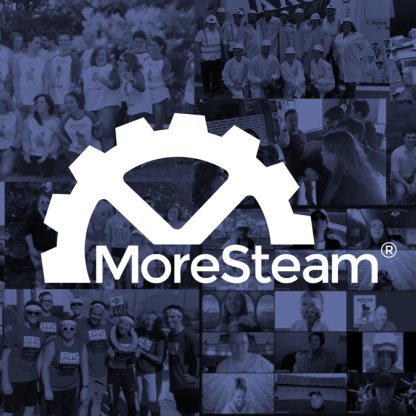
Pull, Don't Push, Your Way to a Continuous Improvement Culture
December 17, 2019CI the Southwest Way
When you settle in on a Southwest Airlines flight and it's time for the plane to taxi down the runway, you might notice something different every time, whether it's a humorous spin on the safety instructions or a personalized welcome from the captain. These touches are designed to get a chuckle out of you or calm your nerves, but they accomplish something for our employees, too. The people on the front lines representing the Southwest brand every day get a chance to inject their personality into the customer experience, an aspect of our business that we take very seriously despite the fun we often have with it. It's that same down‐to‐earth, customer‐first culture that posed an interesting challenge - and created enormous opportunity - for our ongoing continuous improvement journey.
The culture at Southwest has become famous across the airline industry and in the broader business world. When our company's first flight left the runway in 1971, our "founding fathers" set out to create a different airline that combined the best fares and the best customer experience. Driving both is what's called the "warrior spirit," where our employees are empowered to do whatever it takes to make things happen. That warrior spirit grew into the way we do business and resulted in the famous "Southwest hospitality" that makes our company what it is today.
I joined the company in 2011 after my former employer, AirTran, merged with the airline and quickly learned the value of our culture and that warrior spirit. So in 2014, when my team was charged with developing a continuous improvement program that would bring structure to our problem‐solving and improvement processes, we recognized the challenge: How do we ingrain continuous improvement thinking without changing our culture, stopping our warrior spirit, or removing our fun‐loving attitude?
Many enterprise continuous improvement initiatives begin with a broken culture. For us, our culture is perhaps our greatest strength.
Many enterprise continuous improvement initiatives begin with a broken culture. For us, our culture is perhaps our greatest strength — but we knew that when it comes to the way we do business, there is always room to find a better way. To create the right fit, we carefully crafted what we called "CI the Southwest Way," a structured continuous improvement approach that still fueled our warrior spirit.
Front‐line employee empowerment has long been one of Southwest's chief cultural strengths. If a process was getting in the way of delivering an excellent customer experience, our employees had our permission to change it. This same strength, though, was breeding weaknesses: "non‐standard work" and complexity were creeping their way into processes. Our team knew the continuous improvement initiative could help solve complexity and improve operations, but we also knew our culture wouldn't sustain a "push" approach to change. Instead of entering departments and telling them what to do, we'd wait for those departments to "pull" by proving ourselves first.
We first placed the spotlight on top executives at Southwest, who backed up their words with action.
To do so, we first placed the spotlight on top executives at Southwest, who backed up their words with action: they participated in training, they surfaced problems within their sphere of influence, and they made the case across the organization by showing results instead of just making promises. Armed with these initial wins, we began carefully making the case to departments in a way that leveraged their warrior spirit, saying: "We are here as a resource for you if and when you want to pursue continuous improvement in your department. We are here to coach you, but you will own your process and your solutions, and you'll ensure sustainable change."
Then we waited, and slowly but steadily, demand grew.
This approach has paid off. As the fifth year of "CI the Southwest Way" comes to a close, 22 of our 36 departments have welcomed continuous improvement training, built embedded CI Teams, and celebrated successes. One of those many successes is our group reservations process, which used to be complex, manual, and dependent on multiple touch points across three departments. Today it's a sleek and simple value stream, housed in a single department and requiring just a couple customer touchpoints. This began with departments getting together to value‐stream map the process and ended with a better customer experience, reduced costs, and a nice boost in our group‐reservation revenue.
At Southwest Airlines, our employees are empowered to solve problems just as they always have been. Many of them, though, now have a whole new way of looking at the world around them, a "lens" that can spot process waste, envision efficiency, and bring it to life through structured problem solving. With those inefficiencies out of the way, our people now have more time to do what they do best: make our customers happy.
— Ruben Del Toro | Southwest Airlines
Ruben Del Toro, MBA, PMP, MBB, is Southwest Airlines' Director of Enterprise Continuous Improvement. In his role, he leads, provides vision, and sets the direction of the airline's first Enterprise Continuous Improvement Program. He began his career in the aviation industry more than 20 years ago as an aircraft mechanic for the U.S. Air Force before joining AirTran, which later merged with Southwest.

MoreSteam's Enterprise Process Improvement platform includes the tools, training, and software you need to transform your organization, large or small, into a problem-solving powerhouse. Our products are trusted by over half of the Fortune 500 and by other organizations and universities worldwide. When you partner with MoreSteam you gain a team dedicated to helping you succeed.



